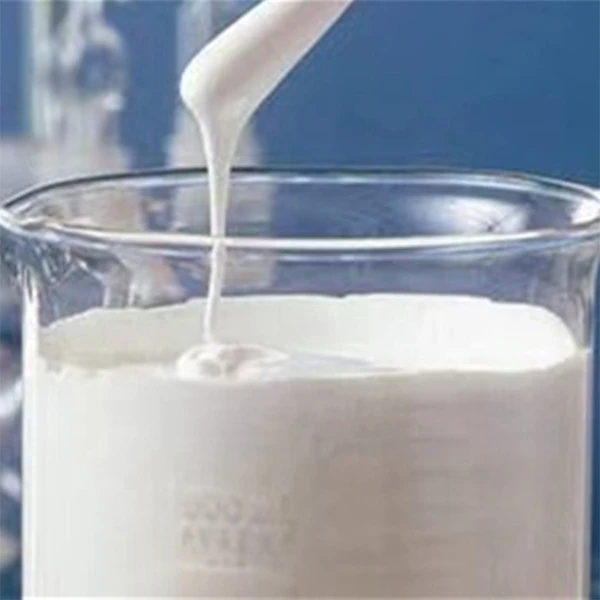The Role of White Powder HPMC in Wall Putty Applications
Wall putty serves as an essential material in the construction and interior decoration industries, providing a smooth and even surface for painting and finishing. Among various components used in wall putty formulations, Hydroxypropyl Methylcellulose (HPMC) stands out, especially in its white powder form. This article will explore the significance of white powder HPMC in wall putty, focusing on its properties, benefits, and applications.
Understanding HPMC
HPMC is a non-ionic cellulose ether, derived from natural cellulose sources. It is a white, free-flowing powder, and its unique chemical structure allows it to interact with water, forming a gel-like consistency. This property is critical for various applications, especially in the formulation of wall putty.
Properties of White Powder HPMC
1. Water Retention One of the most notable properties of HPMC is its excellent water retention capability. This property ensures that the wall putty remains workable for extended periods, allowing for easy application and smoothing. The retained moisture prevents the putty from drying too quickly, reducing the risk of cracking or uneven surfaces.
2. Thickening Agent HPMC acts as a thickener, providing the right viscosity for wall putty formulations. This thickening ability allows manufacturers to achieve the desired consistency for easy spreading and leveling on walls.
3. Adhesion Improvement The incorporation of white powder HPMC enhances the adhesion of wall putty to various substrates. This improved bonding strength is vital for ensuring that the putty remains attached to surfaces, especially in challenging conditions or when applied to porous materials.
4. Workability A well-formulated wall putty that incorporates HPMC offers excellent workability. The smooth application allows for fine finishing, enabling contractors and DIY enthusiasts to achieve professional-looking results without extensive training.
5. Compatibility White powder HPMC is compatible with various other additives commonly used in wall putty formulations, such as pigments, fillers, and other binders. This compatibility allows manufacturers to customize their products to meet specific performance requirements.
white powder hpmc for wall putty

Benefits of Using White Powder HPMC in Wall Putty
1. Enhanced Durability By incorporating HPMC into wall putty, manufacturers can produce a more durable product that withstands environmental stressors, such as humidity and temperature fluctuations. This longevity reduces the need for frequent repairs and repainting.
2. Improved Aesthetic Qualities The smooth finish that results from using HPMC in wall putty enhances the overall aesthetic appeal. This property is particularly important in residential and commercial spaces where visual appeal is a priority.
3. Reduced Environmental Impact HPMC is derived from natural cellulose, making it a more eco-friendly option compared to some synthetic alternatives. Its use in wall putty formulations aligns with the growing demand for sustainable building materials.
4. Cost-Effectiveness Although the initial cost of HPMC may be higher than some traditional fillers, the benefits it offers—including reduced material usage, improved application efficiency, and lower maintenance costs—make it a cost-effective choice in the long run.
Applications of Wall Putty with HPMC
Wall putty infused with white powder HPMC is used in diverse applications, including residential homes, commercial buildings, and industrial structures. Its versatility makes it suitable for various types of surfaces, including drywall, concrete, and plastered walls.
The construction industry increasingly prioritizes high-performance coatings due to their benefits in terms of durability and finish. As a result, wall putty that leverages the advantages of HPMC is becoming a preferred choice among contractors and builders.
Conclusion
In summary, white powder HPMC is an essential component of modern wall putty formulations. Its unique properties, such as water retention, adhesion enhancement, and workability, contribute to increased durability and aesthetic quality in finished surfaces. As the construction industry continues to evolve toward sustainable and high-performance materials, the role of HPMC in wall putty remains crucial, providing solutions that meet the demands of contemporary construction while offering lasting benefits.
-
A Comprehensive Guide to Methyl Ethyl Hydroxyethyl Cellulose: Applications and Industry InsightsNewsNov.24,2025
-
Understanding Methyl 2 Hydroxyethyl Cellulose: Uses, Benefits & Industry InsightsNewsNov.24,2025
-
Hydroxyethyl Methyl Cellulose HEMC: Industrial Uses, Benefits & Future TrendsNewsNov.23,2025
-
HEMC Cellulose: Versatile & Sustainable Industrial Polymer | YoungcelNewsNov.23,2025
-
Methyl Hydroxyethyl Cellulose: Versatile Building Block for Industry & SustainabilityNewsNov.23,2025
-
CAS 9032 42 2: Understanding Polyvinyl Alcohol's Impact on Industry & SustainabilityNewsNov.22,2025




